What Is Top of Funnel Marketing? Guide (2025)
Understand top of funnel marketing, its role in attracting prospects, and effective strategies to build awareness and generate leads.

The first question every founder or product leader should ask is simple: what is top of funnel marketing? If nine out of ten visitors on your site aren’t ready to buy, your first interaction isn’t about conversion at all — it’s about connection. Outbrain’s 2025 full‑funnel report notes that almost 96% of visitors arriving on a website are not ready to make a purchase, yet they’re still open to being persuaded. This statistic is a reality check: even the best products can’t skip the early stages of customer awareness. In this article I’ll explain what is top of funnel marketing in plain language, show why it matters to product and design teams, outline core tactics and metrics, and share real‑world examples and pitfalls from my experience advising early‑stage teams. Consider this a guide for founders, product managers and design leaders who want to build awareness and trust from day one.
What is funnel in marketing?
Marketing folks love funnels, but the concept is straightforward: it’s a way of organizing the customer journey from first awareness to becoming a paying customer. Outbrain describes it as identifying the stages a potential customer goes through to become a paying customer. Funnel’s own guide puts it this way: the funnel follows the customer from the moment they first hear about your brand (the awareness stage) to the moment they act (purchase). The stages are generally:
- Awareness (Top‑of‑Funnel or TOFU) – prospects realize they have a problem or need. Your goal is to educate and build familiarity.
- Consideration (Middle‑of‑Funnel or MOFU) – prospects actively research solutions and compare options.
- Decision (Bottom‑of‑Funnel or BOFU) – prospects are ready to buy; your job is to explain why your solution is the right fit.
- Retention/Advocacy – keeping customers happy so they stay and spread the word.
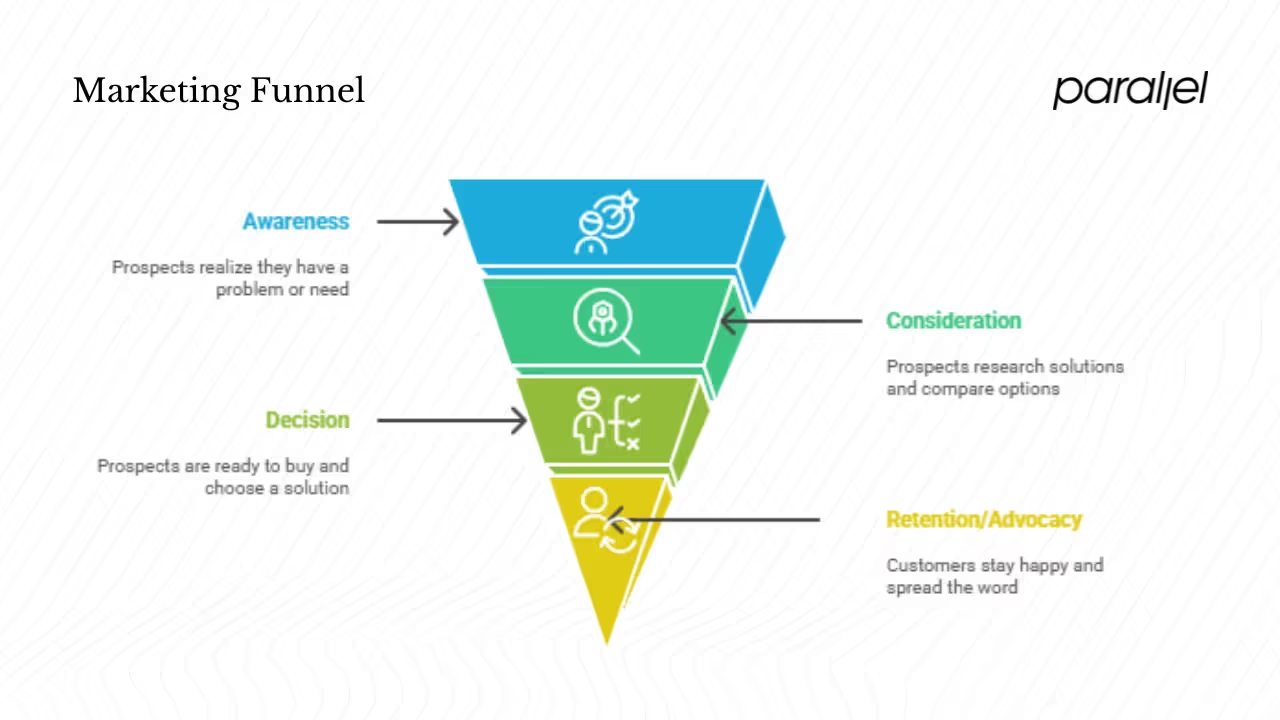
People move through these stages gradually, and they don’t always proceed linearly. Someone might discover you through a blog post, forget about you for months, then come back because of a social ad and eventually become a customer. The model matters because it helps product and design teams see the bigger picture: early interactions aren’t about features or pricing, they’re about making a connection and establishing trust.
What is top of funnel marketing?
All the marketing activities aimed at increasing brand awareness with your target audience. It’s the widest part of the funnel, where your goal is to cast a broad net and help people understand their pain points rather than sell immediately. Because only a fraction of those who hear about you will convert, you need a large pool of awareness. Top‑of‑funnel tactics often look like educational articles, social posts and ads that introduce your point of view. The tone is conversational and helpful rather than salesy. People in this stage aren’t ready to commit — they’re just meeting you, much like the “meet‑cute” in a romantic comedy.
If you ever find yourself unsure how to answer a team‑mate who asks what is top of funnel marketing, it helps to point back to this definition: it’s not a trick or a hack, it’s a long‑term investment in awareness. Repeating the question internally keeps everyone focused on education instead of hard selling.
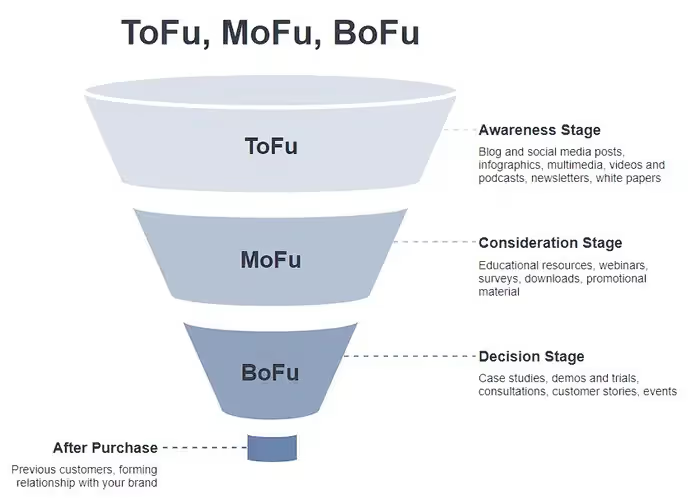
By contrast, the middle and bottom of the funnel involve nurturing and conversion. Messaging becomes more specific about how your product solves problems, and calls‑to‑action ask for more commitment. The metrics you track shift as well: reach and engagement matter in the upper funnel, while conversions and revenue matter later. When product teams ignore these differences, they risk pushing prospects too hard too early or losing them because there’s no plan to nurture them later.
Why early‑stage teams should care about TOFU
At Parallel we often work with founders who have built an innovative product but struggle to get traction. They invest months perfecting onboarding flows only to discover that not enough people know they exist. Top‑of‑funnel marketing solves this by capturing interest before competitors do. Here are the main reasons early‑stage teams need to prioritize it:
When you consider what is top of funnel marketing in the context of a startup, think of it as the stage where you earn the right to have later conversations. Without it, your beautiful product remains invisible no matter how well it works.
- Lower acquisition costs over time – building brand awareness early reduces the amount you spend later to acquire each customer because people recognize you and trust you. Nielsen’s 2025 annual report shows that retail media spending is expected to grow 20% in 2025, far outpacing the total ad market (4.3%). Brands are investing in awareness because it pays off in the long run.
- Lead generation and nurturing – capturing emails and micro‑conversions gives you a list of interested prospects you can nurture over months. Without this, your funnel leaks: Amra & Elma report that 79% of leads fail to convert because they are not effectively nurtured.
- Learning from early signals – early engagement tells you who is resonating with your message and what content performs. Micro‑conversions, such as downloads or webinar sign‑ups, precede major conversions. Nielsen Norman Group explains that micro conversions occur more frequently and precede macro conversions that directly relate to business goalsnngroup.com. Tracking these small actions helps product teams iterate on their offering and messaging.
- Building trust in a crowded market – when dozens of startups chase the same user, credibility becomes a differentiator. A well‑executed TOFU strategy positions your brand as a helpful guide. Over time this trust reduces friction in later stages and can even create network effects if you encourage referrals.
Ignoring the top of the funnel means your beautifully designed product remains hidden. Investing in awareness not only drives growth but also gives your team the feedback they need to shape the product roadmap.
TOFU tactics: ten approaches with examples
There is no single blueprint for TOFU. Your tactics depend on your audience, resources and product maturity. Before diving into them, pause and ask what is top of funnel marketing for your company; the answer shapes where you invest. Below are ten approaches we’ve seen work for early‑stage teams along with when to use them and their trade‑offs. I’ve drawn examples from my experience and referenced industry research.
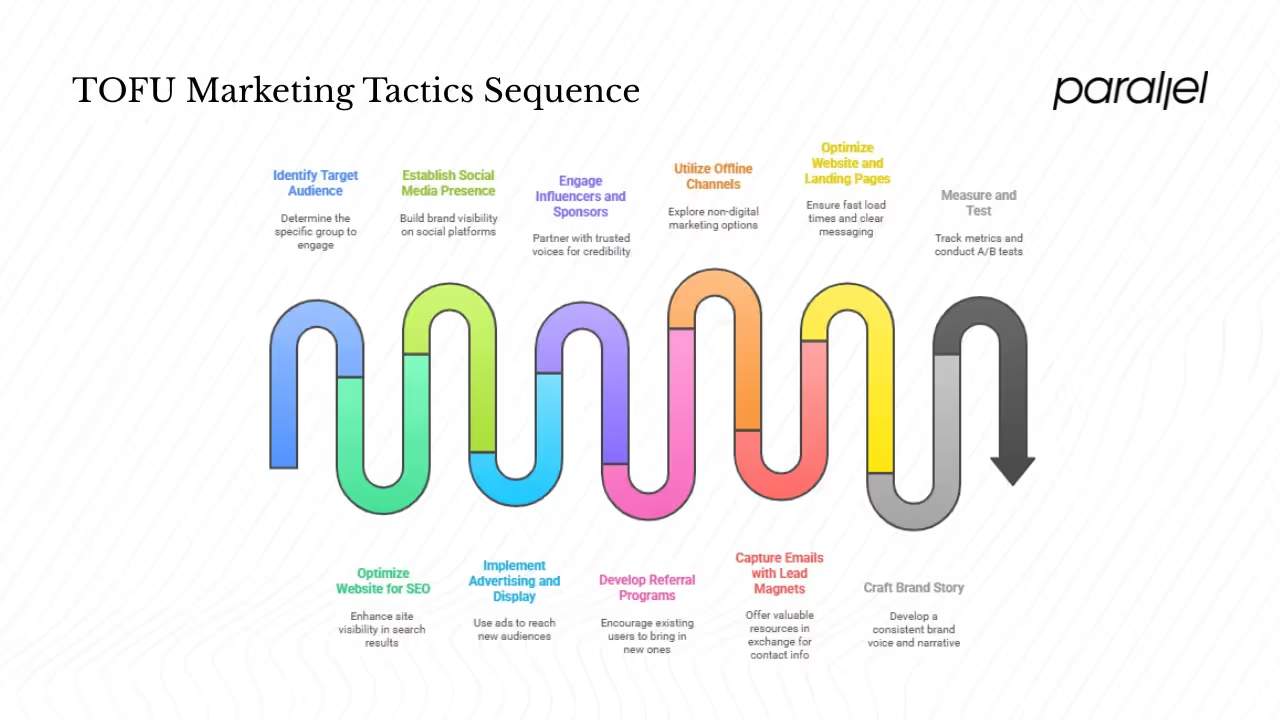
1. SEO and content marketing
Optimizing your site for search engines is a long‑term play that drives organic traffic. Identify keywords with informational intent — phrases people use when exploring a problem. Funnel.io notes that top‑ranked pages capture high footfall and build trust because searchers believe the top results are authoritative. Invest in blog posts, how‑to guides and downloadable resources that educate rather than sell. The trade‑off is time: results build over months, but the payoff compounds. When a piece of content generates steady traffic, it becomes a lead magnet you own.
2. Social media presence
Your audience likely spends hours scrolling feeds. Organic social posts humanize your brand and allow you to listen to conversations. Paid social ads expand reach by targeting demographics or interests. Use this channel to test narratives and visual styles quickly. A caution: don’t chase vanity metrics; aim for meaningful engagement. Comments and shares reveal what messages resonate, while follower counts can be deceiving. Early‑stage teams should start with one or two platforms where their audience hangs out and post consistently.
3. Advertising and display
Native content recommendations and digital display ads can introduce your brand to large audiences. Outbrain’s platform, for instance, emphasises that 96% of first‑time visitors aren’t ready to buy. Display and native ads are therefore about storytelling and value rather than promotion. They work well for reaching new niches, but you need to invest in creative that stands out and consider frequency caps to avoid fatigue. The trade‑off is cost: display impressions are cheaper than search ads but still require budget.
4. Influencer partnerships and sponsorships
Working with influencers or sponsoring podcasts/webinars gives you access to engaged communities. Funnel’s article cites Squarespace’s podcast sponsorships and YouTube ads that let hosts create their own scripts, which lends credibility. When you partner with voices your audience trusts, you borrow that trust. The challenge is alignment: choose partners whose values match yours, and be transparent about sponsorships so it doesn’t feel forced.
5. Referral and word‑of‑mouth programs
Existing users can be your best marketers. Design referral programs that reward users for bringing in peers. Make sharing easy: shareable links, social badges, and simple invites. Word‑of‑mouth is particularly powerful in B2B SaaS where decision‑makers seek peer validation. The trade‑off is control: you cannot script what users will say. Instead, focus on delivering a great experience that inspires people to talk.
6. Offline and alternative channels
Digital isn’t everything. Digital out‑of‑home (DOOH) advertising such as digital billboards and transit screens reaches broad audiences in high‑traffic areas. Online radio ads on streaming services can target demographics based on listening habits. Depending on your audience, community events or meetups can also spark awareness. These channels are often overlooked by tech companies but can cut through the online noise. Evaluate cost and local relevance before investing.
7. Email capture and lead magnets
Email remains one of the highest‑converting channels. Offer valuable resources — templates, checklists, mini‑courses or webinars — in exchange for contact information. Set expectations clearly; the reward should solve a real pain point. Once captured, nurture with helpful content rather than sales pitches. Tools like HubSpot, Mailchimp or ConvertKit can automate sequences. The trade‑off is that poorly executed lead magnets feel like bait. Make sure you deliver what you promise.
8. Website and landing‑page optimization
Your website is often the first experience someone has with your brand. Ensure fast load times; Amra & Elma’s research shows that e‑commerce sites loading in one second have 2.5 times higher conversion rates than those loading in five seconds. Make your message clear within the first few seconds. Use visuals that evoke emotion and headlines that speak to the reader’s problem. Calls‑to‑action should be low‑friction (“learn more” or “download guide”) rather than “buy now.” Continuously A/B test layouts, copy and CTAs.
9. Storytelling and brand voice
People remember narratives, not feature lists. Develop a consistent brand voice that communicates your values and purpose. Funnel.io emphasises that TOFU messaging should focus on customer problems and tell engaging stories. Share behind‑the‑scenes stories, founder interviews and case studies that illustrate your mission. Aligning your story with your audience’s identity builds affinity and trust. The challenge is vulnerability: be willing to show work in progress and learnings, not just polished outcomes.
10. Measurement and testing
Finally, measurement isn’t a separate function; it’s integral to every tactic. Funnel’s guide lists metrics such as reach, impressions, time on page, content engagement, organic traffic, click‑through rate and email captures. Pick metrics aligned with your goals. Set up UTM parameters and dashboards from day one. Run A/B tests on creative elements, channels and landing pages to learn what works. Avoid over‑reacting to single data points — look for trends.
Metrics and KPIs: what to track in the early stages
Early‑stage teams can be overwhelmed by data. Instead of measuring everything, focus on a handful of signals that indicate whether your TOFU efforts are working. Below is a table summarizing key metrics, why they matter and tools that can help you track them. Use these as guidelines, not rigid benchmarks. Remember that performance varies by industry and channel.
In the early stage you won’t see high conversion rates. The average sales funnel conversion rate across industries is about 2.35%, with top performers above 5%. Landing pages convert at similar rates. A lead‑to‑customer conversion rate of around 5% is common. These benchmarks remind us that success is often incremental. Use them to set realistic targets rather than to judge yourself harshly.
Setting goals
When setting goals, start with reach and engagement rather than revenue. For example, aim to double your organic traffic over six months or to capture 500 newsletter sign‑ups from a landing page. As you gather data, refine your targets. If your CTR is low, experiment with different headlines or creative. If email open rates are flat, test subject lines and send times.
Common pitfalls and how to avoid them
As exciting as TOFU activities are, they come with traps. I’ve seen early‑stage teams misstep in predictable ways:
- Selling too early – Bombarding new visitors with product features or pricing can scare them off. Remember that 96% of visitors aren’t ready to buy. Focus on their problem first.
- Inconsistent messaging – Changing tone or visual style across channels confuses people and erodes trust. Maintain a coherent voice and identity across your blog, ads and social posts.
- Poor audience segmentation – Not every new visitor is your ideal prospect. Use personas and analytics to tailor messages to different segments. Broad targeting wastes budget.
- Wrong channel choices – Chasing every new platform dilutes your efforts. Start with channels where your audience is active and scale gradually.
- Neglecting measurement – Failing to track micro‑conversions means you don’t know what’s working. Remember that micro conversions precede macro onesnngroup.com.
- Expecting quick wins – Top‑funnel marketing is a long game. Building awareness takes time and consistency. Don’t abandon a strategy after a few weeks because the ROI isn’t immediate. According to Amra & Elma, only 34% of companies regularly optimize their funnel, so the opportunity is huge for those willing to iterate.
Building a TOFU strategy step by step
When building a plan, keep returning to the simple question what is top of funnel marketing supposed to achieve? It’s not a trick to get people into a pipeline; it’s about helping them explore their problem. Here’s a framework you can follow to build your own top‑funnel strategy:

- Define your target audience and their triggers. Develop buyer personas or use jobs‑to‑be‑done interviews to understand who you’re trying to reach. Identify the moments that make them seek solutions — a frustrating workflow, a missed opportunity, a new regulation.
- Map awareness triggers to content. For each pain point, brainstorm topics and formats that would help someone understand the problem. For example, a founder struggling with onboarding might search for “how to improve user activation.” That becomes a blog post, a webinar and a short social video.
- Choose channels and content types. Select channels based on where your audience spends time. For developers, that might be LinkedIn and podcasts; for HR managers, webinars and industry forums. Mix evergreen content (timeless guides) with timely pieces reacting to news or trends.
- Create a content calendar. Plan a cadence — perhaps one long‑form article per month, weekly social posts and quarterly webinars. Stay flexible; if a piece performs well, double down. If something flops, learn and move on.
- Set up tracking and analytics. Use UTM parameters on all links. Build dashboards that show reach, engagement and micro‑conversion metrics. Configure heat‑mapping or session‑recording tools to understand user behavior on your site.
- Iterate and test. A/B test headlines, images, landing pages and CTAs. Try different video lengths or podcast formats. Use the results to refine your content and media mix. For example, if a shorter video drives more engagement, lean into brevity.
- Plan the handoff to MOFU. Decide how you will nurture leads who engage at the top of the funnel. This might mean an automated email sequence, a personal outreach from your founder or a retargeting ad. Provide value at each step; resist the urge to sell until they show intent.
Examples and lessons from the field
A few stories illustrate how TOFU can work — and how it can go wrong.
Squarespace’s podcast partnerships – Squarespace sponsors popular podcasts but gives hosts creative freedom to weave the message into their style. Funnel’s article notes that this lends trustworthiness to the brand. The result: listeners hear an authentic recommendation rather than a generic ad. The lesson: choose partners whose voice aligns with yours and let them speak in their own way.
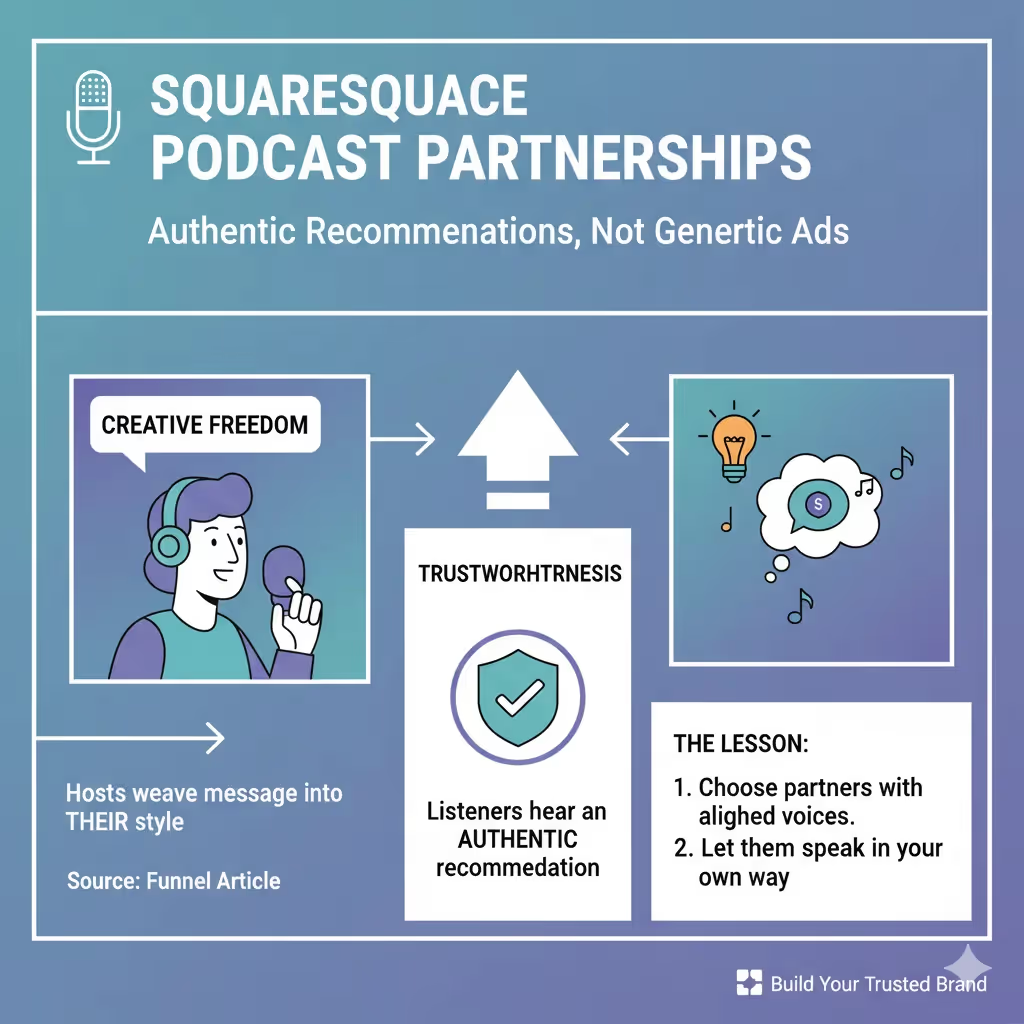
Rhode’s social media marketing – The skincare brand Rhode, founded by Hailey Bieber, stood out in a crowded beauty market by building a strong narrative around its values. Funnel highlights its partnerships and consistent brand identity that cut through the “sea of celebrity beauty brands”. The takeaway: even when you have a famous founder, clear values and authentic content are what connect with audiences.
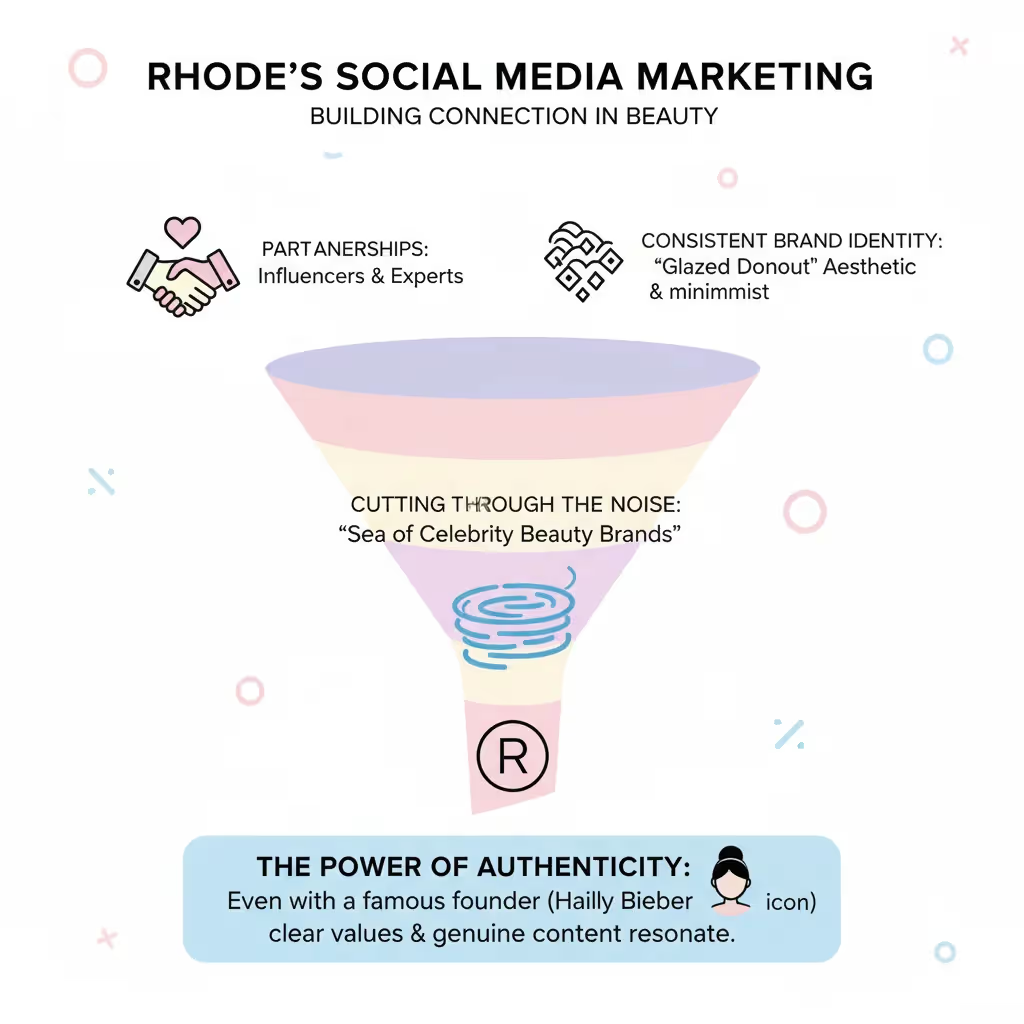
Red Bull’s event marketing – Red Bull invests heavily in sponsoring extreme sports events. While this seems far from energy drinks, it positions the brand within a community of risk‑takers and adventure seekers. Their events create live experiences that are later amplified through video and social media. For startups, the lesson isn’t to host a cliff‑diving contest but to find communities where your brand naturally fits and invest in experiences that resonate.
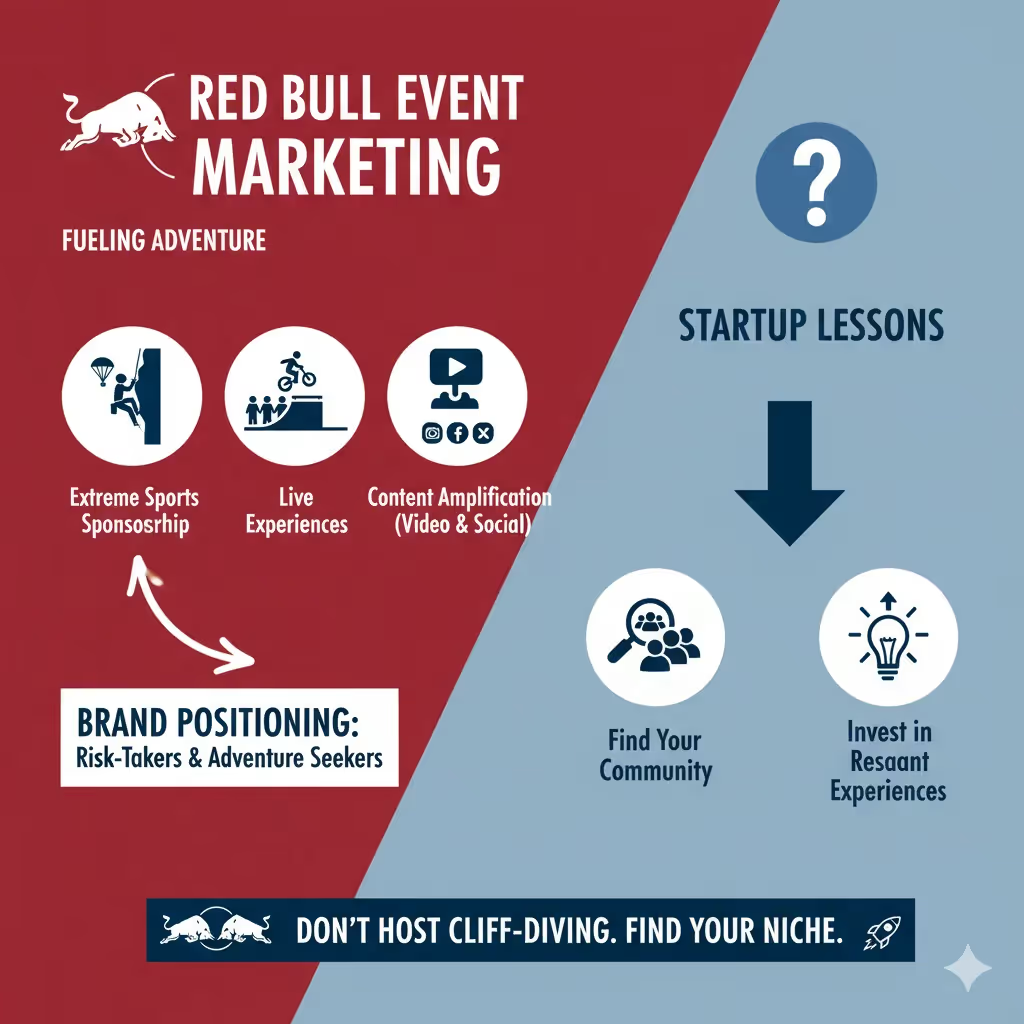
A cautionary tale: pushing product too soon – A SaaS startup we worked with focused almost exclusively on feature announcements in blog posts and paid ads. They saw a steady stream of site visitors but very few sign‑ups. Interviews revealed that prospective users didn’t understand why they needed the product. We shifted the strategy to produce educational content about the underlying problem, participated in community discussions and offered a free tool to assess readiness. Within six months the newsletter list tripled and sign‑ups increased because prospects felt informed and prepared before encountering the product.
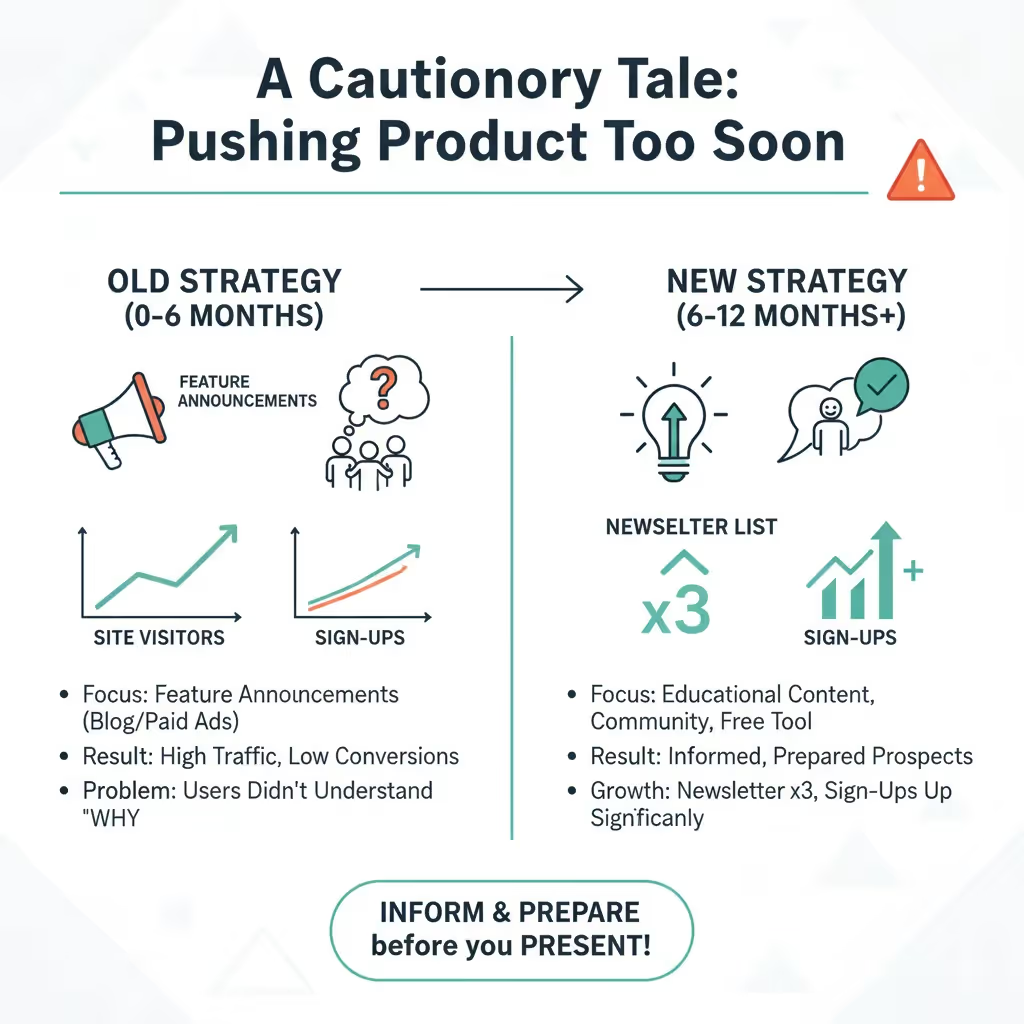
These examples show that TOFU work is diverse: it can be podcasts, social campaigns or offline events. The common thread is that the content meets people where they are and speaks to their interests or problems.
Investing in TOFU: how much and when
Deciding how much to spend on awareness can be tricky, especially with limited budgets. A useful rule of thumb is to allocate 60–70% of your marketing budget to top‑funnel activities when you’re very early and gradually shift more to mid‑ and bottom‑funnel as your audience grows. Nielsen’s research shows that 65% of marketers plan to increase retail media network investment in 2025. This reflects a broader shift toward upper‑funnel channels that combine reach with first‑party data. You don’t need to spend on retail media specifically, but the trend underscores the value of awareness. Start with content and owned channels, which cost time more than money. As you validate your messaging, layer in paid channels like social ads or native placements. Choose tools that suit your stage; for example, a simple email platform might suffice before you invest in a full CRM.
Phasing your investment
- Foundational phase – Focus on content and SEO, build your email list and establish a presence on one or two social platforms. Budget here is mostly time; your out‑of‑pocket costs may be limited to web hosting and basic tools.
- Growth phase – Once you have a baseline audience and know which messages resonate, invest in paid social, retargeting and perhaps influencer partnerships. Allocate funds for professional creative if needed. Keep an eye on CPL and adjust budgets accordingly.
- Scale phase – With product‑market fit and revenue, expand to larger awareness plays like DOOH, podcasts, or even TV. Use data to justify bigger spends; if a channel isn’t delivering, pause and reallocate.
Conclusion
Top‑of‑funnel marketing isn’t flashy; it’s foundational. It’s about starting conversations, building trust and learning who your audience really is. When done well, it reduces acquisition costs, increases conversions later and shapes a product that fits the market. When rushed or neglected, it leaves your funnel leaky and your product invisible.
So the next time someone asks what is top of funnel marketing, you can answer confidently: it’s the art of meeting people early in their journey and guiding them with generosity. If your team ever loses focus, ask yourselves again what is top of funnel marketing and remember that it’s an ongoing commitment rather than a campaign. Treat it this way and you’ll build the kind of brand that customers invite into their lives.
FAQ
1) What is top of the funnel in marketing?
It’s the stage where potential customers first become aware of a brand or problem. Activities here focus on education and building trust rather than selling.
2) What is the top of a funnel called?
It’s often referred to as the awareness stage, upper funnel, or TOFU, all of which describe the broad pool of prospects at the beginning of their journey.
3) What are the four marketing funnels?
Many models describe four stages: awareness, interest, desire and action (AIDA) or the TOFU, MOFU, BOFU model plus a post‑purchase retention stage. Some businesses treat retention as a separate funnel or add loyalty as a fourth stage.
4) What is the top end of the funnel?
It’s the broadest part — the initial contact where you attract and engage prospects before they have any purchase intent. Here you generate awareness, provide value and start the relationship so that a small percentage will move toward consideration and eventual conversion.


.avif)










